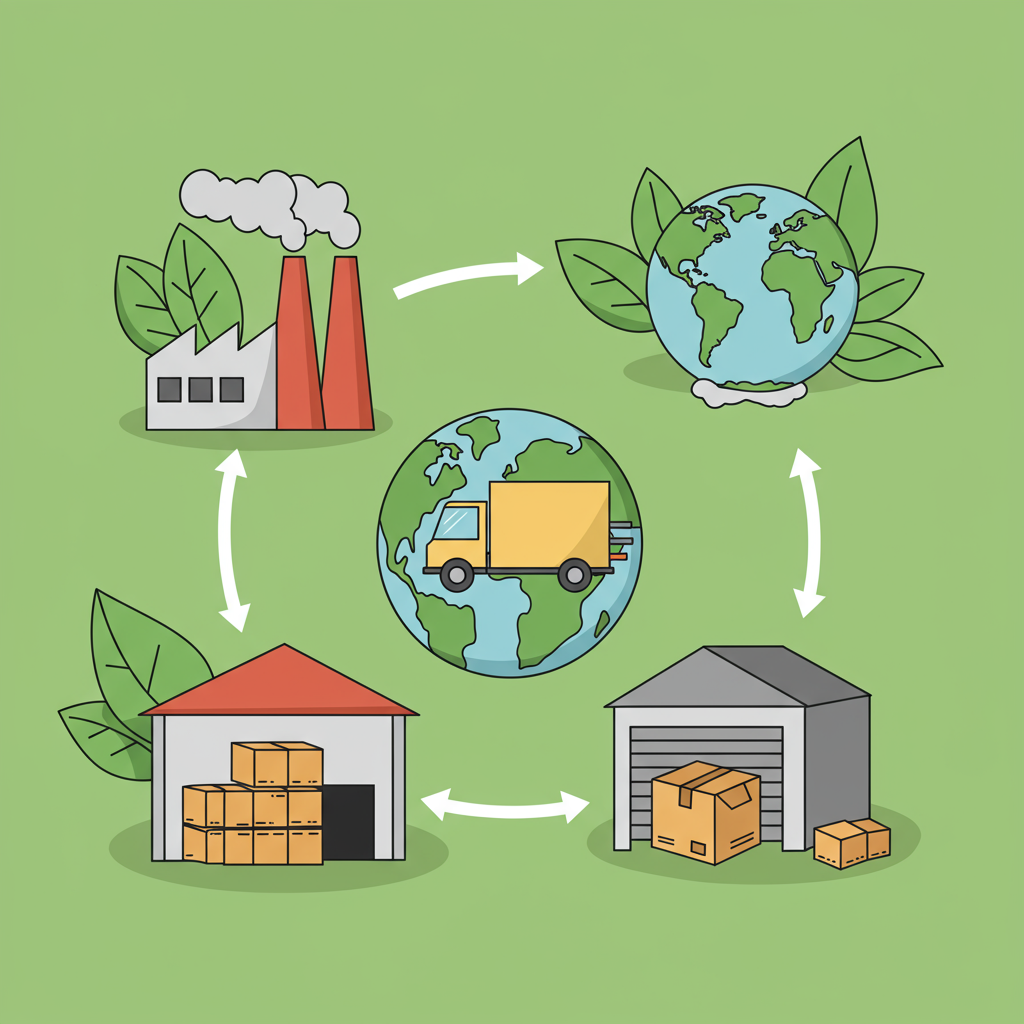A comprehensive guide for Shopify merchants looking to integrate environmental and social responsibility into their operations, from sourcing to delivery.
As a Shopify merchant, I know you’re constantly looking for ways to innovate, grow, and connect with your customers. But have you considered how your supply chain impacts not just your bottom line, but also the planet and its people?
In today’s world, consumers are increasingly conscious of the environmental and social footprint of the products they buy. This shift isn’t just a trend; it’s a fundamental change in how businesses are expected to operate.
That’s why I believe creating a sustainable supply chain is no longer a niche concern but a strategic imperative for any modern e-commerce business, especially one built on Shopify. It’s about building a business that thrives while doing good.
So, what exactly do I mean by a “sustainable supply chain”? At its core, it’s about minimizing environmental impact, ensuring ethical labor practices, and promoting economic viability throughout every stage of your product’s journey.
From the raw materials you source to the moment your product arrives at your customer’s door, every step offers an opportunity to make more responsible choices. And trust me, these choices resonate deeply with your target audience.
The benefits extend beyond just good PR. A sustainable supply chain can lead to reduced operational costs, enhanced brand reputation, increased customer loyalty, and even improved resilience against future disruptions.
My first piece of advice for you is to start with an audit. Take a deep dive into your current supply chain. Where do your materials come from? Who are your manufacturers? How are your products shipped?
Identify the areas with the highest environmental and social impact. This might be energy consumption in manufacturing, waste generation, or even the distance your products travel. Knowledge is power here.
Next, let’s talk about supplier selection. This is arguably one of the most critical steps. I always recommend seeking out suppliers who share your commitment to sustainability.
Look for certifications like Fair Trade, GOTS (Global Organic Textile Standard), or B Corp status. Ask about their labor practices, their energy sources, and their waste management policies. Don’t be afraid to ask tough questions.
Consider local sourcing where possible. Reducing transportation distances significantly cuts down on carbon emissions. Plus, it often supports local economies, which is a win-win in my book.
Product design also plays a massive role. Can your products be designed for durability, repairability, or recyclability? I encourage you to think about the entire lifecycle of your product, not just its initial sale.
Choose materials that are renewable, recycled, or have a lower environmental footprint. For instance, opting for organic cotton over conventional cotton, or recycled plastics instead of virgin ones, makes a tangible difference.
When it comes to manufacturing, inquire about your partners’ processes. Are they using renewable energy? Do they have water conservation programs? Are they minimizing waste and pollution?
Packaging is another area where you can make a significant impact. I’ve seen so many Shopify stores switch to eco-friendly packaging, and it’s a change customers truly appreciate.
Think beyond just recyclable materials. Can you reduce the amount of packaging used? Can you opt for compostable mailers, recycled cardboard boxes, or even reusable packaging solutions?
Shipping and logistics are often the biggest carbon culprits in e-commerce. I recommend exploring options like carbon-neutral shipping programs, which many carriers now offer.
Optimize your shipping routes and consider consolidating orders. For international shipping, sea freight is generally more carbon-efficient than air freight, though slower. Balance speed with sustainability.
What about returns and end-of-life? This is an often-overlooked aspect of the supply chain. Can you implement a take-back program for your products? Can components be reused or recycled?
Transparency is key. Once you’ve made these sustainable changes, tell your story! Use your Shopify store’s product pages, “About Us” section, and blog to communicate your efforts.
Certifications and clear labeling can build trust with your customers. I’ve found that consumers are willing to pay a premium for products from brands they perceive as ethical and responsible.
Technology can be a powerful ally in this journey. Supply chain management software can help you track materials, monitor supplier performance, and even calculate your carbon footprint.
Data analytics can reveal inefficiencies and areas for improvement you might not have noticed otherwise. Leverage these tools to make informed decisions.
Collaboration is also vital. Engage with your suppliers, logistics partners, and even other merchants. Share best practices and work together towards common sustainability goals.
Remember, building a sustainable supply chain is not a one-time project; it’s a continuous journey of improvement. Regularly review your practices, set new goals, and adapt as new technologies and information become available.
Shopify itself offers various apps and integrations that can assist with aspects like carbon offsetting for shipping, sustainable product sourcing, or even managing returns more efficiently. Explore the Shopify App Store for tools that align with your goals.
Ultimately, by embracing sustainability in your supply chain, you’re not just protecting the planet; you’re building a more resilient, reputable, and profitable business for the long term. It’s an investment that pays dividends in many ways.
I truly believe that every small step we take as merchants contributes to a larger, positive impact. What are your thoughts on integrating sustainability into your Shopify store’s operations? I’d love to hear your perspective.
Thank you for taking the time to consider these important steps. I hope this article has provided you with a clear roadmap to begin or enhance your sustainable supply chain journey.






